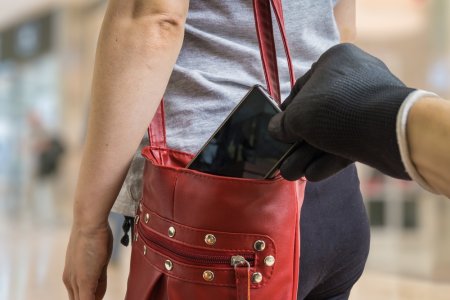How a stolen phone can lead to a $12,500 nightmare: ‘These things do hurt’
By
Seia Ibanez
- Replies 26
In the picturesque town of Broome, a small business owner's reliance on modern technology became a financial disaster.
Tony Moore, a 64-year-old caterer, found himself $12,500 poorer after thieves made off with his mobile phone and subsequently drained his bank account.
Tony was busy providing a charity breakfast aimed at helping the homeless when his lifeline to his business—a mobile phone—was snatched.
The device, which was not secured with a passcode, became an open treasure chest for the thieves.
It was more than just a phone to Tony; it was the command centre for his takeaway-food business, controlling everything from online orders to security cameras.
‘It controls my online ordering system, it's got my security cameras for the shop,’ Tony said.
‘I use my phone almost like a computer. I send emails, receive emails, do banking, and control my online ordering and different portals to the taxation department.’
‘It's more than a phone. It's running my business.’
Using the 'Find My iPhone' feature, Tony was able to pinpoint the location of his phone and reported it to the local police. However, when he felt the response wasn't swift enough, he took matters into his own hands.
His search led him to a wrecked car, where he found his phone amidst rubbish bins and debris. But the relief was short-lived.
Upon checking his online banking, he discovered unauthorised transactions and withdrawals totalling $12,500.
‘There's no guarantee that I'm going to get the money,’ he said.
‘I really needed a more proactive attempt by either the police or the banks that if we could get the accounts frozen, more action could have been taken immediately.’
The digital trail of theft led to a Bankwest account, where $10,000 was transferred, and a Commonwealth bank account, which received $2,000. An additional $500 was withdrawn from an ATM.
The broader context of this incident is alarming.
In 2022, the Australian Competition and Consumer Commission (ACCC) reported that Australians lost a staggering $3.1 billion to scams, with bank impersonation scams accounting for about $18 million in losses.
When Tony reached out to his bank, Westpac, for help, he was met with a cold response.
‘One of the questions was, “Did I have a pin number to actually open my phone?”’ he said.
‘They said, “Well, thank you, Mr Moore. You've broken the terms and conditions of banking with Westpac online.”’
‘“Because you haven't had a PIN number, we will not cover you for any fraud that's happened on your account.”’
Tony insisted that no banking details were saved on his phone, he didn’t know how the thieves got into his Westpac account.
‘I was totally unaware that you had to have a PIN number on your phone,’ he said.
‘I would have thought reasonable security would have been the password and account number that Westpac has in their apps.’
He has since rectified this oversight by setting a passcode while Westpac is investigating the matter.
In its statement, a Westpac spokesperson said, ‘We don’t comment on individual customer matters, but we are currently conducting a thorough investigation and will be assisting local police.’
A Western Australia Police spokesperson was also involved in the investigation, but they would not comment on the details of the case.
The theft of his phone was not an isolated incident for Tony.
He said he also loses money in stolen goods at his store every week, amounting to nearly $1,000 a month.
‘I probably lose $200 a week on average; drinks and ice-creams where people just come in, grab something and then run,’ he said.
‘I used to chase them, but it's just getting too dangerous. So we just let it go.’
‘If you want to multiply that out over 18 years, it's a lot of money and I'm not rich. I struggle. So these little things do hurt.’
With bank scams on the rise, it’s always better to be safe than sorry, especially after hearing horror stories of people falling prey to these situations.
In a previous story, a man fell victim to a scam that cost him his $50,000 savings due to a seemingly innocent text from what he believed was his bank. You can read more about the story here.

What are your thoughts on this issue? Share them with us in the comments below.
Tony Moore, a 64-year-old caterer, found himself $12,500 poorer after thieves made off with his mobile phone and subsequently drained his bank account.
Tony was busy providing a charity breakfast aimed at helping the homeless when his lifeline to his business—a mobile phone—was snatched.
The device, which was not secured with a passcode, became an open treasure chest for the thieves.
It was more than just a phone to Tony; it was the command centre for his takeaway-food business, controlling everything from online orders to security cameras.
‘It controls my online ordering system, it's got my security cameras for the shop,’ Tony said.
‘I use my phone almost like a computer. I send emails, receive emails, do banking, and control my online ordering and different portals to the taxation department.’
‘It's more than a phone. It's running my business.’
Using the 'Find My iPhone' feature, Tony was able to pinpoint the location of his phone and reported it to the local police. However, when he felt the response wasn't swift enough, he took matters into his own hands.
His search led him to a wrecked car, where he found his phone amidst rubbish bins and debris. But the relief was short-lived.
Upon checking his online banking, he discovered unauthorised transactions and withdrawals totalling $12,500.
‘There's no guarantee that I'm going to get the money,’ he said.
‘I really needed a more proactive attempt by either the police or the banks that if we could get the accounts frozen, more action could have been taken immediately.’
The digital trail of theft led to a Bankwest account, where $10,000 was transferred, and a Commonwealth bank account, which received $2,000. An additional $500 was withdrawn from an ATM.
The broader context of this incident is alarming.
In 2022, the Australian Competition and Consumer Commission (ACCC) reported that Australians lost a staggering $3.1 billion to scams, with bank impersonation scams accounting for about $18 million in losses.
When Tony reached out to his bank, Westpac, for help, he was met with a cold response.
‘One of the questions was, “Did I have a pin number to actually open my phone?”’ he said.
‘They said, “Well, thank you, Mr Moore. You've broken the terms and conditions of banking with Westpac online.”’
‘“Because you haven't had a PIN number, we will not cover you for any fraud that's happened on your account.”’
Tony insisted that no banking details were saved on his phone, he didn’t know how the thieves got into his Westpac account.
‘I was totally unaware that you had to have a PIN number on your phone,’ he said.
‘I would have thought reasonable security would have been the password and account number that Westpac has in their apps.’
He has since rectified this oversight by setting a passcode while Westpac is investigating the matter.
In its statement, a Westpac spokesperson said, ‘We don’t comment on individual customer matters, but we are currently conducting a thorough investigation and will be assisting local police.’
A Western Australia Police spokesperson was also involved in the investigation, but they would not comment on the details of the case.
The theft of his phone was not an isolated incident for Tony.
He said he also loses money in stolen goods at his store every week, amounting to nearly $1,000 a month.
‘I probably lose $200 a week on average; drinks and ice-creams where people just come in, grab something and then run,’ he said.
‘I used to chase them, but it's just getting too dangerous. So we just let it go.’
‘If you want to multiply that out over 18 years, it's a lot of money and I'm not rich. I struggle. So these little things do hurt.’
With bank scams on the rise, it’s always better to be safe than sorry, especially after hearing horror stories of people falling prey to these situations.
In a previous story, a man fell victim to a scam that cost him his $50,000 savings due to a seemingly innocent text from what he believed was his bank. You can read more about the story here.
Key Takeaways
- Broome business owner Tony Moore was the victim of theft and fraud when someone stole his phone and transferred $12,500 from his bank accounts without authorisation.
- Tony’s phone, crucial for his small takeaway-food business, was taken during a charity event for the homeless. The theft left him without control over his online ordering system and security cameras.
- Without a passcode set on his mobile, Tony was deemed ineligible for reimbursement by his bank, Westpac, because he had breached their terms and conditions.
- Despite the personal loss and ongoing issue of theft in his store, Tony has now secured his phone with a passcode, and both Westpac and the WA Police are investigating the incident.








